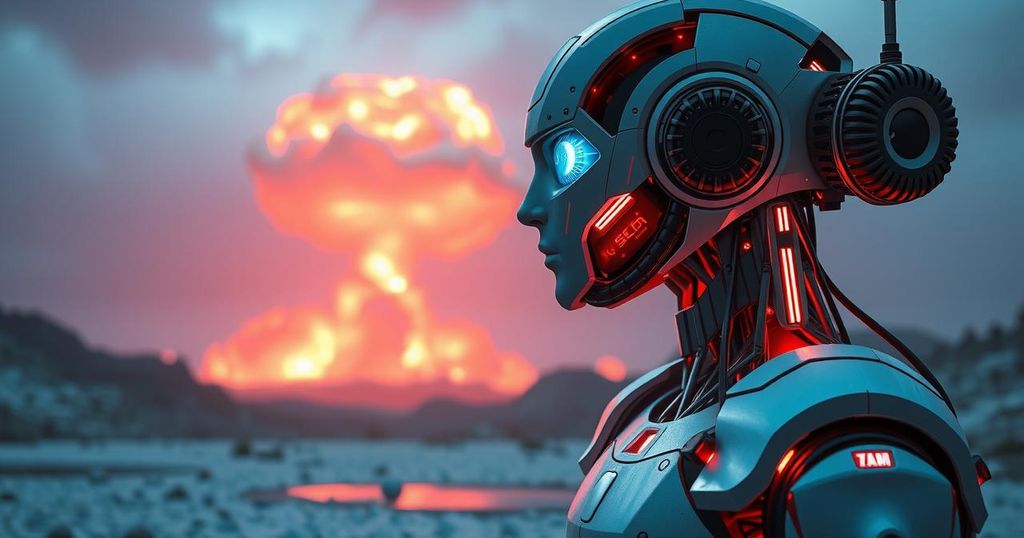AI
Science
Tech
ARTIFICIAL INTELLIGENCE, BRYAN HANSON, CONSTELLATION, DATA CENTERS, EMMA STRUBELL, ENVIRONMENTAL IMPACT, GEORGE WASHINGTON UNIVERSITY, GREENHOUSE GAS EMISSIONS, META, MIDDLETOWN, NORTH AMERICA, PENNSYLVANIA, PITTSBURGH, SCIENCE, SHARON SQUASSONI, SILICON VALLEY, ST, STRUBELL, TECH, THREE MILE ISLAND, UNITED STATES
James O'Connor
0 Comments
Tech Giants Embrace Nuclear Power Amid AI Energy Demand Surge
Tech companies like Microsoft, Google, and Amazon are turning to nuclear power to meet escalating energy demands driven by artificial intelligence (AI). Three Mile Island is set to restart operations with Microsoft’s backing, while new modular reactor designs offer potential for efficient, safe energy. However, skepticism remains about whether the slowly-moving nuclear sector can keep pace with the rapid advancements in technology, highlighting the need for a balanced approach amid pressing climate challenges.
MIDDLETOWN, Pennsylvania — Beneath the shadow of Three Mile Island’s towering cooling stacks, Bryan Hanson recalls the bittersweet moment in 2019 when he shut down the nuclear reactor. Once a powerful symbol of energy, the plant is now poised for resurrection, revitalized by a $1.6 billion investment following a commitment from Microsoft. The tech giant’s power purchase agreement signals a shift in strategy as major firms like Google and Amazon eye nuclear power to meet burgeoning energy demands driven by artificial intelligence (AI).
For years, climate-conscious tech companies prioritized renewable sources like solar and wind, yet they now find the intermittent nature of these energies insufficient to support round-the-clock operations. “The size of the battery you would need to build next to a data center to support these workloads is enormous and incredibly expensive,” notes Emma Strubell of Carnegie Mellon University. In contrast, nuclear energy presents a steady, emission-free alternative — a formidable ally for the data centers powering AI.
Still, despite the promise of nuclear, skepticism lingers. The nuclear sector moves tediously slow, while Silicon Valley thrives on a rapid-fire development cycle. Sharon Squassoni from George Washington University voices her confusion: “I find it fascinating that big tech is interested in these technologies, but do they understand the time and money involved?”
As tech markers race to innovate, they’re also pledging improved sustainability. Models like X-energy propose a modern approach with smaller, modular reactors that promise to power data centers without melting down in catastrophic scenarios. CEO Clay Sell insists this new age of nuclear power is set to meet the challenges of increasing energy demands. Amazon has already put over $250 million into this vision, signaling a pivotal change in the energy landscape.
However, the journey remains fraught with delays and challenges. The Nuclear Regulatory Commission’s approval processes stretch timelines, and in a race against escalating AI demands, time is a precious commodity. Edwin Lyman notes that the lessons of the past remind us: nuclear may not be the swift answer to climate change.
Even so, tech executives seem hopeful. Nuclear has emerged as a critical potential solution in this high-stakes race. The commitment across the industry could lay the groundwork for a future where nuclear power finds its place in sustainable technology. But as Squassoni warns, the slow-moving industry might yield to temporary fixes in the face of immediate AI energy needs, suggesting perhaps a rethinking of our pace with technology and its environmental cost.
The contrast between Silicon Valley’s urgency and nuclear’s deliberate progress leaves an open question hanging—will tech’s drive to fuel AI with nuclear power create a sustainable energy future, or will it be a case of too little, too late?
In recent years, major tech companies have pledged to reduce their greenhouse gas emissions significantly. While they initially turned to renewable energy sources such as wind and solar, the demands of artificial intelligence (AI) have begun to outstrip these solutions. AI technologies require continuous and substantial energy inputs, leading these firms to consider nuclear power as a viable alternative. This shift comes amidst a backdrop of a struggling nuclear industry, characterized by slow project implementations and rising costs, against the urgency of tech’s need for stable and reliable energy.
The nuclear renaissance, fueled by tech giants aiming to power the future sustainably, presents a paradox of promise and caution. As companies invest heavily in reviving old plants and envisioning new, modular reactors, the challenge remains whether the industry can adapt quickly enough to meet impending energy demands created by AI. The stakes are high; the window for effective climate action narrows, and the balance between rapid innovation and prudent energy solutions is delicate. The outcome will shape our energy landscape in the coming decades.
Original Source: www.wvia.org




Post Comment